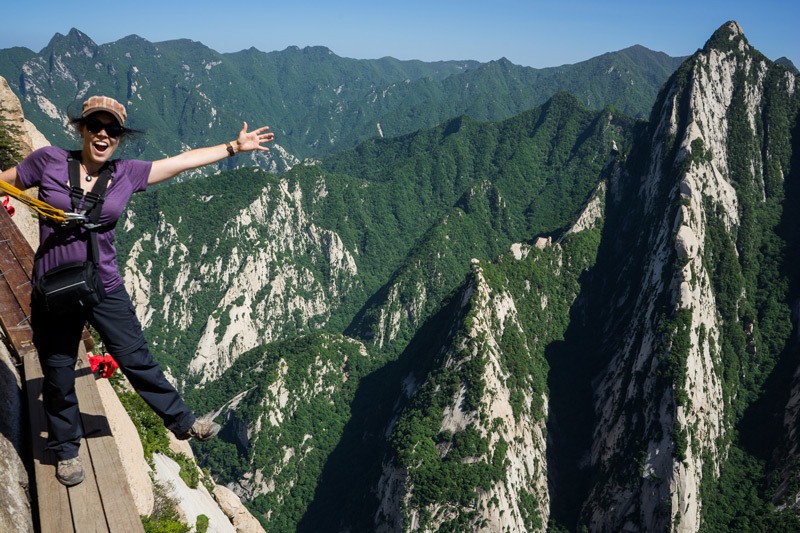
Full-on summer is here at last. This is the time for swimming in lakes, lying on the beach, backyard barbecues, family road trips and…dying in national parks.
Just last week it happened again, when a 54-year-old Houston man died in Big Bend National Park, in western Texas. “Park Rangers investigating a vehicle parked Tuesday at the Marufo Vega trailhead found a note that said Richard Merrill of Friendswood was planning to hike the trail from 7 a.m. to 2 p.m.,” an article in the Dallas Morning News stated. “They found his body a quarter of a mile off the trail.”
In his now famous book, “Death in Yellowstone: Accidents and Foolhardiness in the First National Park,” historian Lee Whittlesey describes the 1871 story of Macon Josey, who in attempting to help a deer out of a Yellowstone hot spring, “fell almost completely into a ‘horrible seething pool.’” He was so badly scalded that when his companion tried to pull his boots and socks off the flesh rolled off with them. Whittlesey writes, noting that he did not have access to Native American records, that if Josey died shortly after leaving Yellowstone, “he would represent the first human death from a hot spring in park history.”
Unfortunately, this gruesome type of death has been repeated throughout the decades. Whittlesey opens his book with the stomach-turning 1981 story of 24-year-old David Allen Kirwan, who also lost his life in a hot spring trying to rescue an animal. A large dog named Moosie belonging to a friend of Kirwan jumped into Celestine Pool, a hot spring measured at 202 degrees Fahrenheit (Remember, water boils at 212 degrees!). Kirwan reached the dog but failed to rescue it, then swiftly tried to climb out. It appears he was in the hot spring for less than 30 seconds. When his friend finally pulled him to shore he was blind and covered with third-degree burns over 100 percent of his body. “That was stupid,” Kirwan managed to say. “How bad am I?” He died within a day.
We don’t relate these stories to curdle your own skin, we relate them as something of a precaution. “We try to educate people starting when they come through the gate,” Brandon Gauthier, the park’s chief safety officer, explained in a post earlier this year on Yellowstonepark.com. Rangers have installed rails near some hot springs but also want to give visitors a chance to get close to popular attractions without ruining the natural landscapes that national parks were created to preserve. Rangers stress that it’s particularly important for parents to keep a close eye on “curious and rambunctious children” when they visit thermal areas. “There are many risks in Yellowstone,” says Gauthier. “It’s something you’ve got to respect and pay attention to.”
A CNN article published earlier this year on National Park deaths explains that the National Park Service has a general photography guide encouraging visitors to check park alerts for hazards and closures, and stay on designated trails regardless of the temptation for an off-road picture. “We get it—national parks have some pretty photogenic scenery,” the guide reads. “The views are truly magnificent. While we want you to capture all of the splendor of our amazing parks, do not put your life at risk for a picture.”
Yellowstone National Park also provides a guide for visitors outlining dangerous selfie locations. The list includes next to geysers, in hot springs, in Yellowstone Lake, on the edge of a canyon, and alongside wildlife. As Digital Dying has reported on a number of occasions, Selfie Deaths are on the rise, and that the National Park System has made a concerted effort to prevent these unnecessary deaths seems like a very good thing.
It is not just Yellowstone that can be deadly. The CNN article notes that there are about six deaths at sites in the National Park System during any given week. Although that statistic might sound like a lot, the article notes, “That works out to about 312 deaths a year, or a little less than one death per million visitors.”
In 2017, Outside Magazine ran an online article on “The 10 Most Deadly National Parks.” Yellowstone, of course, was at the top of the list. Also prominent was Yosemite National Park, in California. “People there most often die from falls or natural causes, such as cardiac arrest and heart attacks, while hiking or climbing,” the article states. “A hiking website dedicated to the park shows more than 20 people have died on Half Dome alone due to falls, lightning strikes, and heart attacks, and that number rises to more than 60 when adding deaths on linked trail systems.”
Also high on the list was Grand Canyon National Park. “The crown jewel of the Park Service,” reads the article, “the Grand Canyon possesses an ancient geology difficult to traverse and the drastic swings in climate, from sub-zero to triple-digit temperatures, punish unprepared visitors.” Deaths are mostly due to cardiac arrests and falls.
And speaking of falls and social media broadcast deaths, let’s not forget the case of the man who fell to his death last year in Huashan National Park in China on what is regarded as the world’s most dangerous hiking trail. The path consists of wood planks just a few feet wide that curve around a sacred mountain to a teahouse on top. The route is popular among visitors, and after the death, Chinese officials instituted a new policy requiring all visitors wanting to do a cliff-side mountain climb to register. This doesn’t really make the climb any safer, it just means if you fall authorities can better identify your body.
Back in the United States, the days are long, the summer is in full swing and the National Parks are waiting. Go visit them, and please be safe. And if the ranger hands you a guide on dangerous selfie locations, make sure to actually read the thing!









